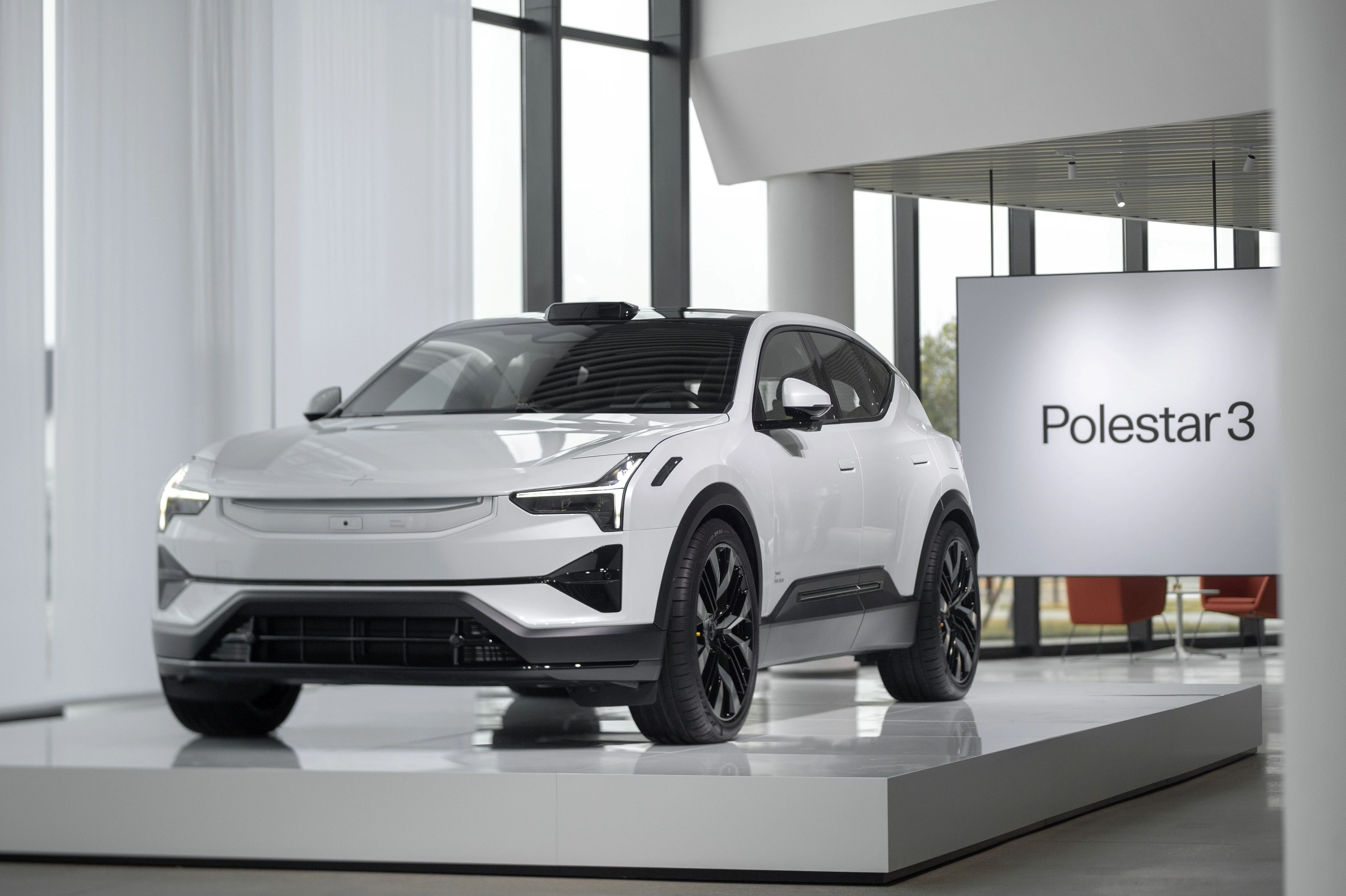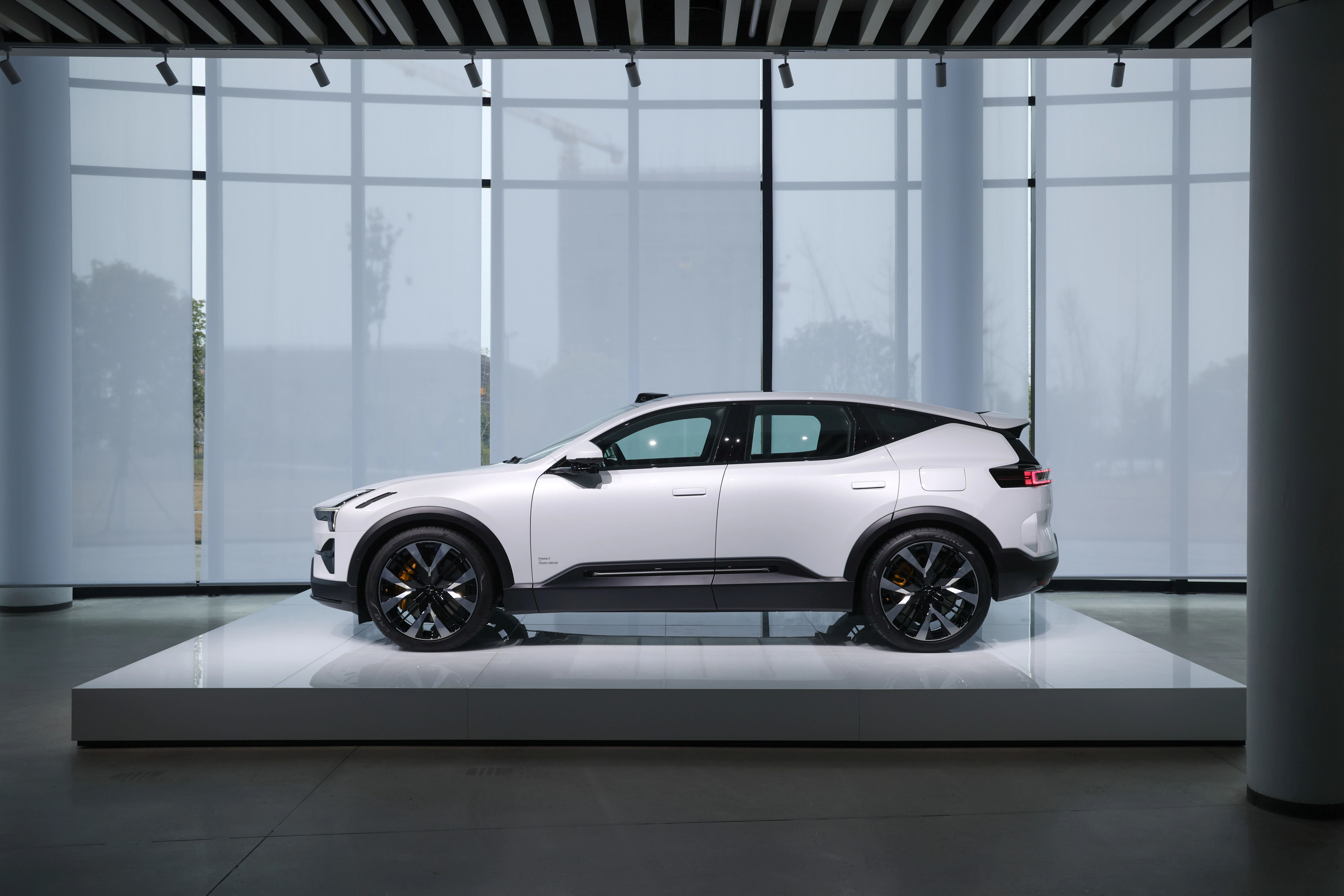Author: Chang Yan
I have always liked sitting in the front row at car launch events to join in the fun, but today I was squeezed to the last row at the Polestar 3 release event.

The reason is very simple. When the Polestar 3 is on display, people always like to stand next to it to observe more.
From the European debut to the domestic first show, whether in the spotlight or in a corner of the exhibition hall, the Polestar 3 is a car that can be described as “good-looking” regardless of the background of the Nordic street in Denmark or the Southwest Bamboo Path in Chengdu.

The reason for its eye-catching appearance is partly due to Polestar’s emphasis on design and partly due to the fact that it is a car that looks different from others.
It is different from traditional luxury brands and even different from previous Polestars.
Why? We have to explore the world constructed in the mind of Polestar’s Global Head of Design, Maximilian Missoni.

The Low Polestar 3
In fact, I have stopped for a long time each time I take a picture of the Polestar 3 because I notice its side ratio.
Obviously, the height-to-length ratio of the Polestar 3 is much smaller than that of traditional luxury SUVs, which means that the height of the Polestar 3 is lower than the traditional SUV in people’s cognition.

This not only makes the original large 22-inch wheels of the Polestar 3 look more exaggerated and futuristic, but also arouses my love for crossover travel cars with its low profile side.But this also brings a new question: can Chinese consumers, who have always used the “tall and large” to describe flagship SUVs, accept this styling?
At the press conference, Maximilian Missoni used a dynamic effect lasting for two minutes to demonstrate the thinking of the Volvo XC40 Recharge in the electrification era for the SUV design.
Electrification allows greater flexibility in the layout of the entire vehicle. First, the XC40 Recharge significantly extends the wheelbase to ensure spaciousness and a sense of dignity in the car. Then, in order to give the driver a more sporty sitting posture, the position of the driver’s seat has been changed to a more inclined design with a sense of sportiness. This not only gives the driver a sense of movement, but also saves considerable headroom, thus realizing the XC40 Recharge’s relatively low head profile.
This allows the XC40 Recharge to have more dynamic elements while enjoying the atmosphere of an SUV.
Moreover, this adjustment of the vehicle height ratio did not affect the triple power and passability required by the XC40 Recharge as a pure electric luxury SUV. Since the adjustment of the vehicle ratio mainly focused on the cockpit part, the XC40 Recharge still has battery arrangement space throughout the chassis, and also has a battery capacity of up to 111kWh. At the same time, with the addition of the dual-chamber air suspension, the entire vehicle still has a 20-25 cm adjustable ground clearance and good off-road capability.
In addition, the XC40 Recharge made clear plans in the initial trade-offs, insisting on the five-seat dual-row layout and giving the second row better legroom.
I am not a Car GuyThe unique and persistent design of the Polestar 3 is closely related to Maximilian Missoni’s unexpected self-declaration.
“I’m not a Car Guy,” he said honestly in an interview, which is quite different from many car designers who would emphatically emphasize that they are enthusiastic car lovers.
In Missoni’s eyes, he is more of a person who likes to “look forward”. “Extreme car designers can become a burden,” and he is also surprised by the speed of development and change in the Chinese auto market. “Chinese consumers are more interested in the future of cars.”
Therefore, on the one hand, Maximilian Missoni cares about the uniqueness of Polestar, and on the other hand, he cares about long-term persistence.
In his view, whether it is luxury goods, fashion, or technology brands, the transmission of high-end feelings is actually related to the brand’s uniqueness. At the beginning, Polestar was Volvo’s high-performance department. In the process of becoming an independent brand, it naturally faced the need to embody its recognition. He admitted, “the design of Polestar 1 was at first closely related to Volvo,” but now with Polestar 3, “people have become increasingly clear about what Polestar is.”
Especially in the Chinese market, the design of new energy vehicles has already shown a wide variety, “but when Chinese users see Polestar, they still find that Polestar’s design is very different.”
Regarding Polestar’s persistence in “purity” and “extreme”, Maximilian Missoni believes that this is still a valuable brand characteristic. In his view, the current fashion and technology industries have both achieved a pure design language, and the Apple Watch is a good example of very simple industrial design that carries advanced functions, and many Chinese companies are doing it well too.
Therefore, many new energy cars in China may have made very eye-catching designs on the large screen and other entertainment features, but Polestar still sticks to its orientation. “What we pursue is not this short-lived moment of pleasure, but a longer-lasting stimulation of consumer aesthetics.”
Polestar 3 is Just the Beginning
Polestar 3 is indeed just the beginning. Polestar 4 will also arrive at the Shanghai Auto Show next month, and Polestar 5 and Polestar 6, which were previously revealed, are already on the road.
Maximilian Missoni said that Polestar 2 was indeed a car with a strong European label, while Polestar 3, 4, and 5 will have stronger global attributes and attach great importance to the Chinese market. Starting with Polestar 3, including Polestar 3 and Polestar 5 that come after, the voice of Chinese users was widely listened to during the design process. “We hope that our brand can continue to uphold our principles while also listening to the opinions of Chinese users.”
Maximilian Missoni said that he would listen to the voice of the Chinese team when designing. After many elements of design were completed, he would also show them to the Chinese team. Currently, the feedback is very good.
For example, he believes that Chinese consumers are very concerned about two elements: “space and luxury”. On the contrary, these two points are not the first elements that European users are concerned about. They may be more concerned about sporty performance, power, and driving control. Therefore, while Polestar attaches great importance to driving, it will also include the Chinese consumers’ demand for luxury SUVs in the design considerations.
 “We’re about to release the Polestar 4 soon, and I can’t reveal too many details, but it will definitely give people a brilliant feeling because the design has comprehensively considered space, breaking people’s traditional impression of mid-size SUV’s space.
“We’re about to release the Polestar 4 soon, and I can’t reveal too many details, but it will definitely give people a brilliant feeling because the design has comprehensively considered space, breaking people’s traditional impression of mid-size SUV’s space.
Maximilian Missoni also has his own thoughts on the logic of product evolution: “Any product is constantly changing,” and change is also the driving force behind product evolution. However, the product will definitely become more convenient, more accessible, and more in line with the preferences of Chinese users.
In the second interview with Maximilian Missoni, I finally asked the question I wanted to ask the most: Is it simpler or more challenging to be the Design Director in a company where the CEO is also a designer?
Maximilian Missoni joked that the job is often simple because the CEO understands the importance of design and there are many tacit understandings, “We have a very good understanding.”
This may be the difference of the Polestar 3, and the reason why Polestar will continue to be different.”

This article is a translation by ChatGPT of a Chinese report from 42HOW. If you have any questions about it, please email bd@42how.com.